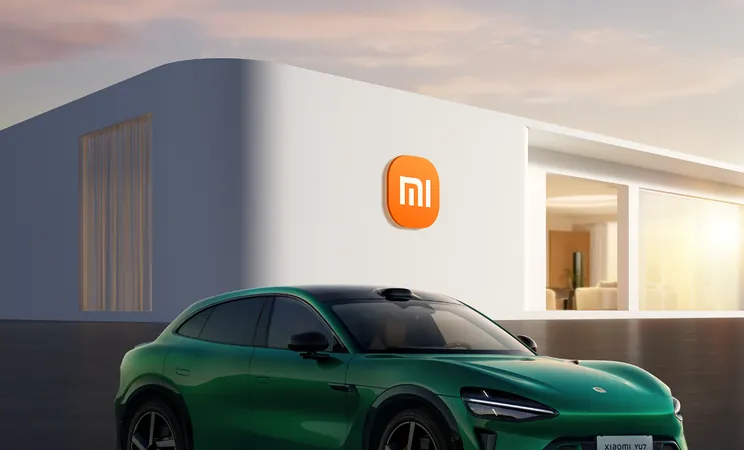
Unlocking the Future: How Quantum Dots are Revolutionizing Technology
2025-09-17
Author: Rajesh
Quantum Dots: The Tiny Titans Behind TV Brilliance
In recent years, television technology has soared to new heights, evolving from high-definition to cutting-edge OLED and QLED screens. Among these, QLED TVs stand out with their vibrant color displays, thanks to microscopic particles known as "quantum dots." But these tiny titans offer more than just eye-popping visuals.
What are Quantum Dots?
Brandi Cossairt, a chemistry professor at the University of Washington, describes quantum dots as incredibly small - about 10,000 times smaller than a human hair. These unique materials, structured much like diamonds, are made from various atoms such as indium or cadmium blended into a specific arrangement. This structure is what allows quantum dots to shine with brilliant colors.
The Science of Light Generation
So, how do these quantum dots create light? Cossairt explains that they're semiconductors, meaning they have energy gaps that electrons must overcome to generate photons, which are the building blocks of light. Interestingly, the color produced by a quantum dot varies based on its size — larger dots emit red light, while smaller ones glow blue. This size-dependent color generation is a key advantage over traditional semiconductors.
Inside a QLED TV: How It Works
In the fascinating world of QLED TVs, blue LEDs shine through a special film containing red- and green-emitting quantum dots. The process involves quantum dots absorbing blue light, getting excited, and then releasing red and green photons. Mixing these with the blue light gives rise to the vivid colors we see on our screens, achieving a spectrum broad enough to satisfy the human eye.
Beyond Screens: The Future of Computing
But quantum dots aren't just for TVs. Cossairt envisions a future where they could be crucial in advanced computing. As we're approaching physical limits in traditional computing, there's a need for innovative methods. Quantum dots could potentially revolutionize how we process information, leveraging properties of light that allow for much greater data handling. Imagine computers where photons, instead of electrons, perform computations!
Overcoming Challenges for a Quantum Future
However, creating a functional quantum computing system isn’t without its hurdles. One significant challenge is ensuring uniformity — all photons produced must have the same properties to interact effectively. Current production methods yield slight variations that suffice for TV displays but fall short for quantum applications.
Innovative Solutions on the Horizon
To tackle these challenges, Cossairt's lab is exploring new techniques like inkjet printing to accurately position quantum dots where they're needed. By encapsulating these minuscule particles in larger shells, manipulating them becomes easier, paving the way for designing photonic quantum computers. Collaborating with mechanical engineering experts, her team is excited about the prospects of integrating quantum dots into photonic devices, and this groundbreaking research is only the tip of the iceberg.
A Bright Future Ahead
As our understanding of quantum dots deepens, we may be on the edge of a technological revolution. From dazzling displays to next-gen computing, the possibilities appear limitless. This transformative innovation awaits, ready to change the world as we know it.


 Brasil (PT)
Brasil (PT)
 Canada (EN)
Canada (EN)
 Chile (ES)
Chile (ES)
 Česko (CS)
Česko (CS)
 대한민국 (KO)
대한민국 (KO)
 España (ES)
España (ES)
 France (FR)
France (FR)
 Hong Kong (EN)
Hong Kong (EN)
 Italia (IT)
Italia (IT)
 日本 (JA)
日本 (JA)
 Magyarország (HU)
Magyarország (HU)
 Norge (NO)
Norge (NO)
 Polska (PL)
Polska (PL)
 Schweiz (DE)
Schweiz (DE)
 Singapore (EN)
Singapore (EN)
 Sverige (SV)
Sverige (SV)
 Suomi (FI)
Suomi (FI)
 Türkiye (TR)
Türkiye (TR)
 الإمارات العربية المتحدة (AR)
الإمارات العربية المتحدة (AR)